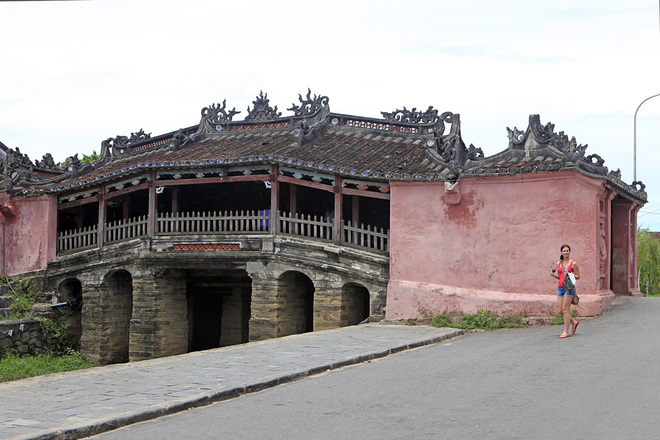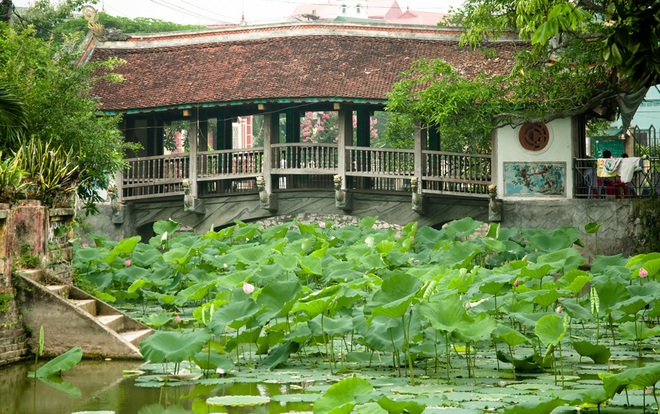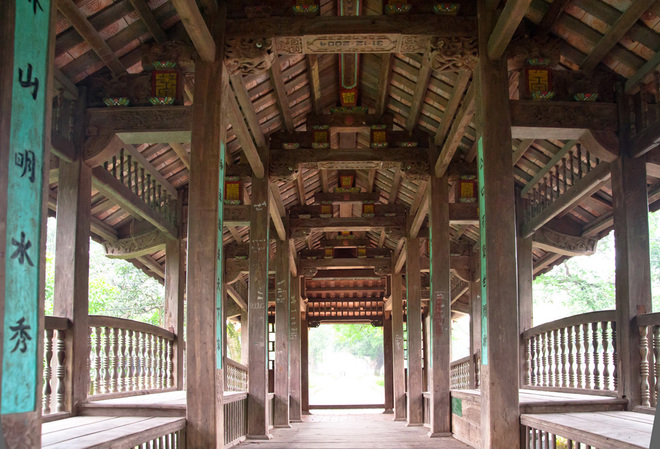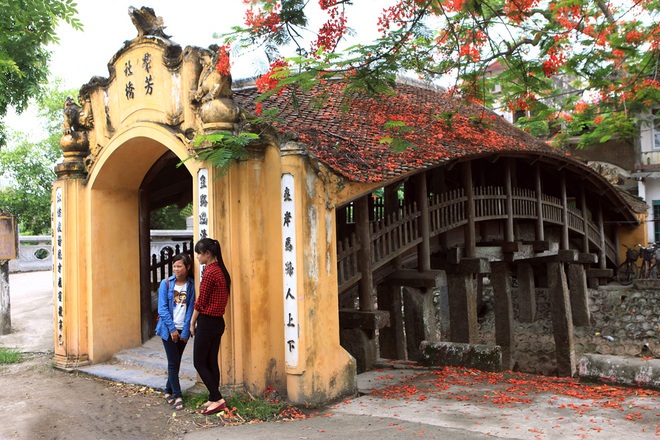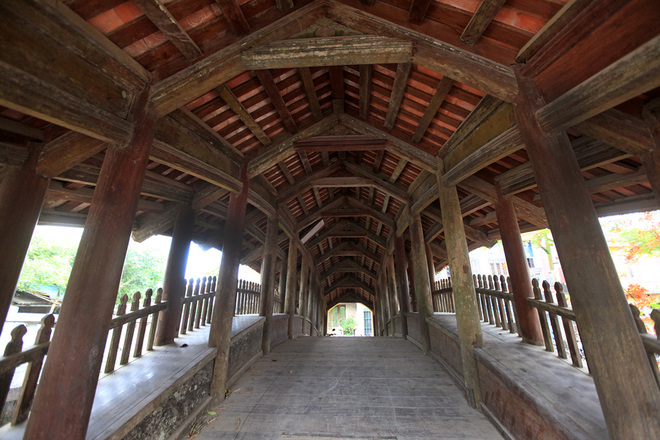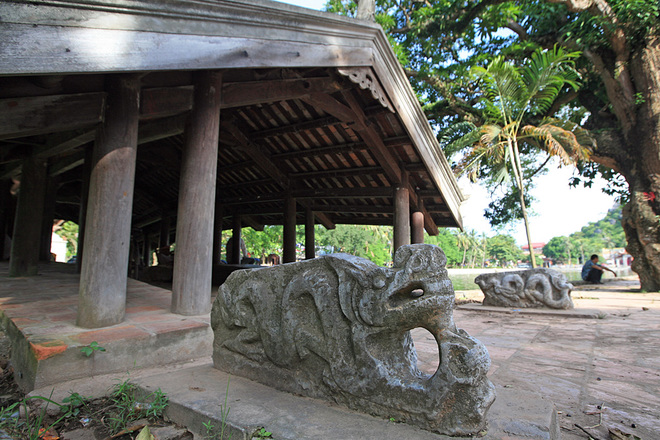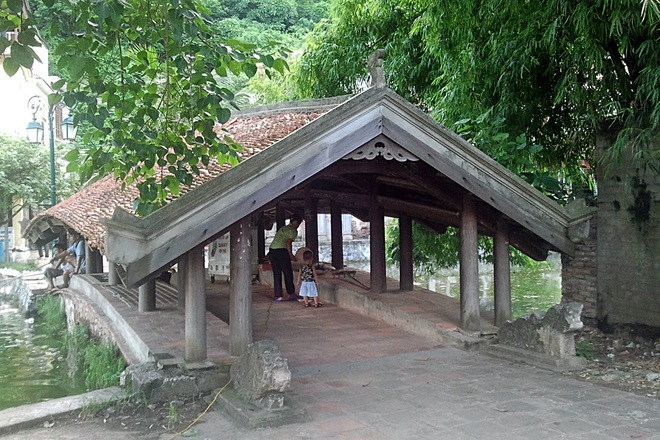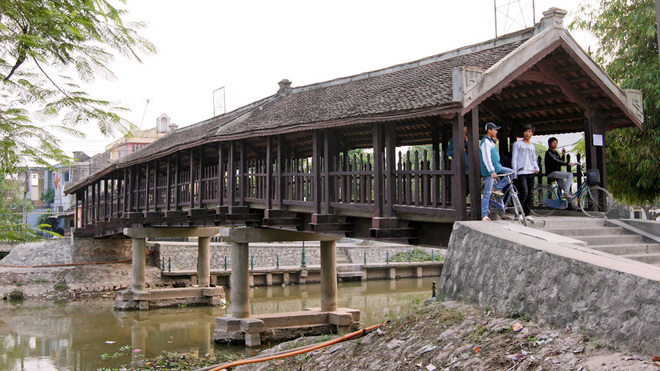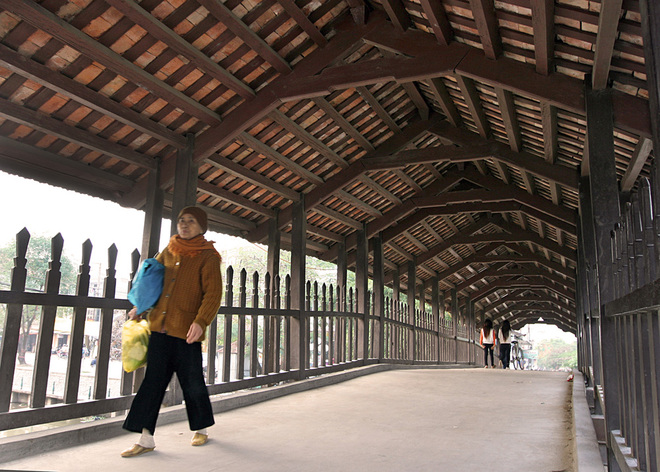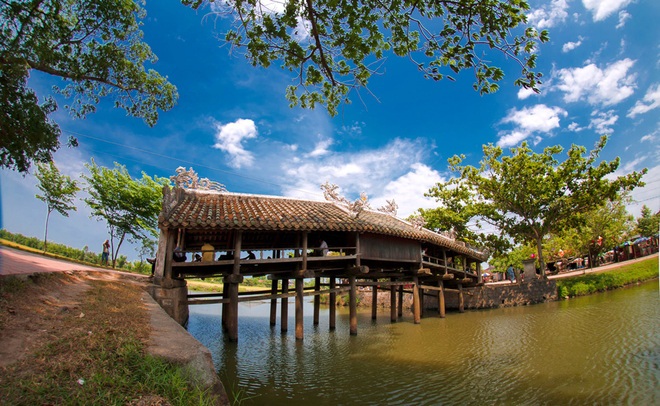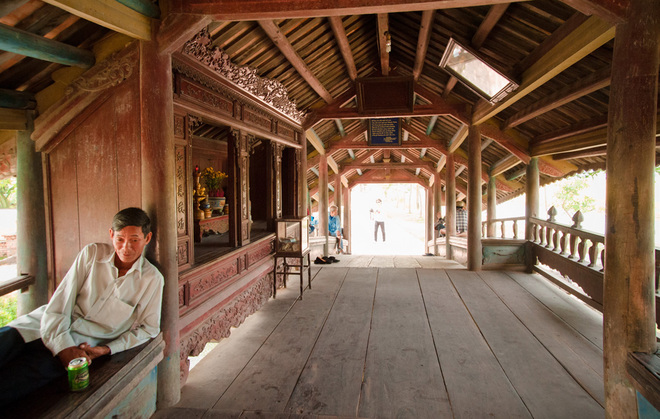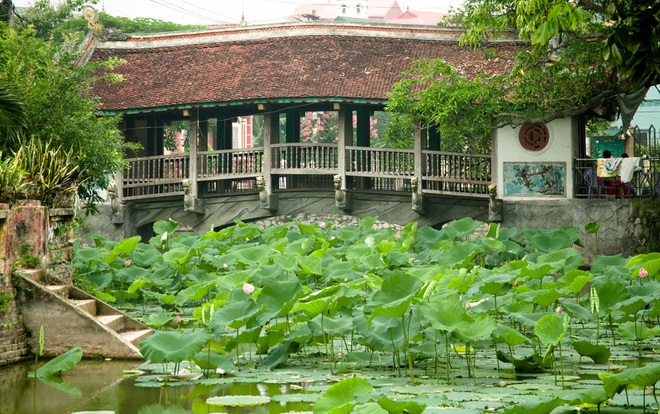
The unique bridges of Hue, Hoi An and Nam Dinh have retained their original beauty for centuries.
|
The Bridge Pagoda was chosen as a symbol of Hoi An ancient town and it appeared on a VND20,000 banknote. The bridge was built by Japanese merchants in the 17th century. The bridge is approximately 18 m long, spanning a creek that flows into the Thu Bon River.
There are wooden statues of a monkey and a dog at the two bridgeheads. In the middle is the statue of Bac De Tran Vu - the god who controls floods.
In Binh Vong Village in Van Binh Commune, Thuong Tin District, Hanoi has a tile-roofed five-compartment bridge spanning the pond in front of the communal house.
On the bridge, there are two wooden platforms for pedestrians.
The tile covered bridge in Hai Anh Commune, Hai Hau District, Nam Dinh Province was built in the 16th century.
The bridge has nine compartments on 18 solid rock pillars, with two corridors for pedestrians.
In the famous Thay Pagoda in Hanoi, there are two tile-roofed bridges built in 1602.
The Nhat Tien Bridge leads to the island amid the lake. On the islet is the Tam Phu Temple.
The Nguyet Tien Bridge spans the road up to the mountain.
Along with a stone church, the Phat Diem tile covered bridge is a unique work in Kim Son, Ninh Binh province.
The bridge is 36 m long, 3 m wide with 3 spans.
The Thanh Toan tile covered bridge in Huong Thuy Town of the central province of Thua Thien – Hue is about 7-8 km from the center of Hue city. The bridge is made of wood and covered with glazed tiles.
The bridge is about 17 m long, 4 m wide and is divided into seven compartments. The middle compartment has an altar for Mrs. Tran Thi Dao, who contributed money to build the bridge to serve local people in the 18th century. |
(Source:VNNet)


